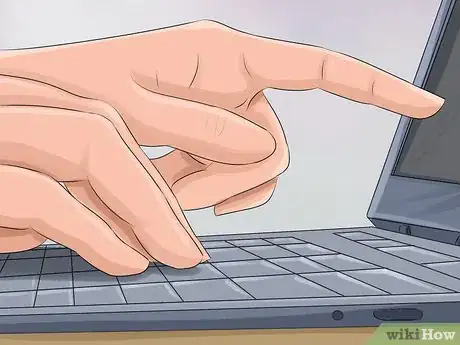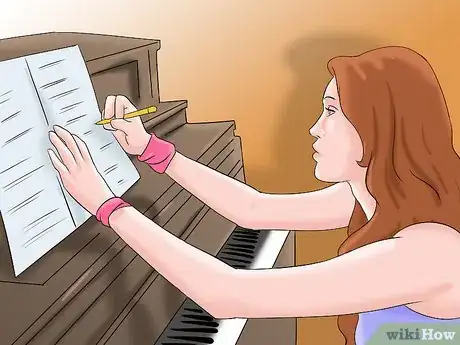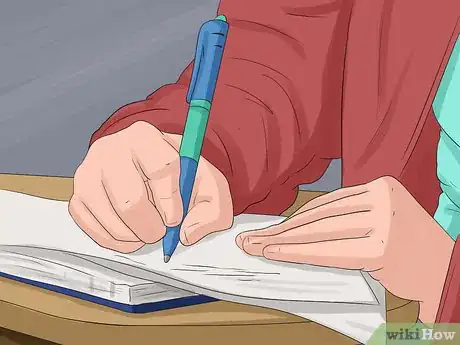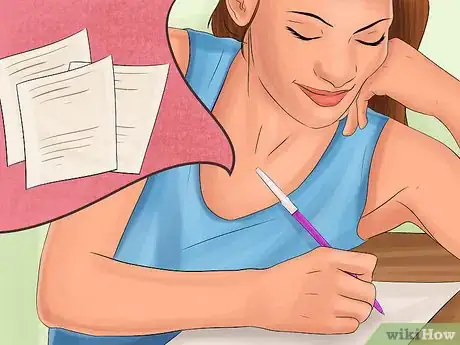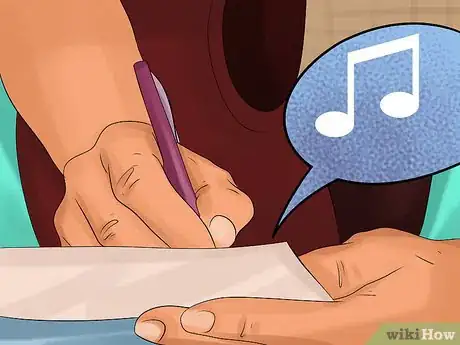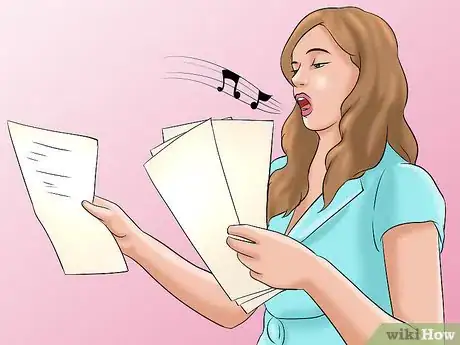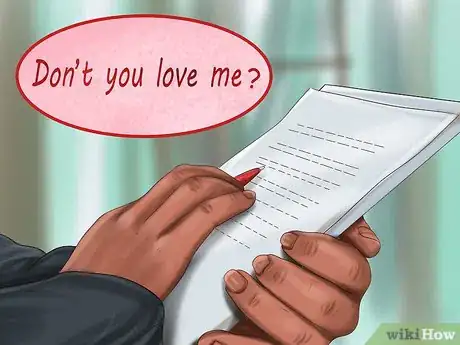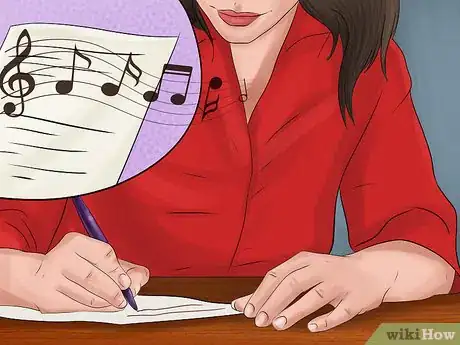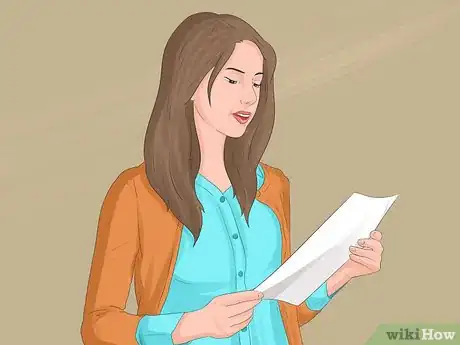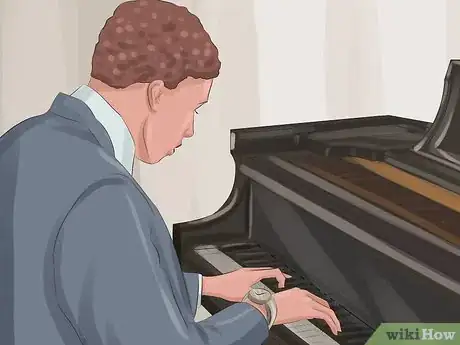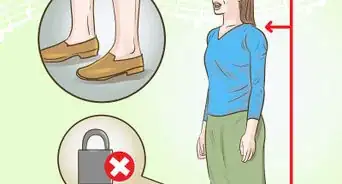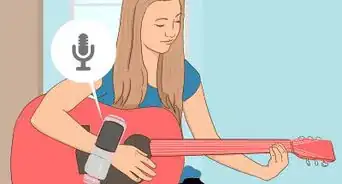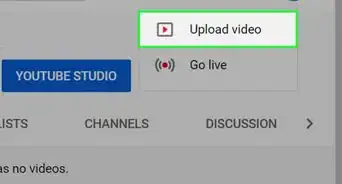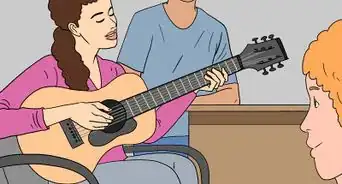X
wikiHow is a “wiki,” similar to Wikipedia, which means that many of our articles are co-written by multiple authors. To create this article, 17 people, some anonymous, worked to edit and improve it over time.
This article has been viewed 59,450 times.
Learn more...
Writing music is fun! It's a great creative outlet, and one of the easiest formats to use is a two or three part voice setting. This article will help you write a song for your church choir, school choir, or just kill time.
Steps
-
1Learn about chord structure, chord progressions and harmony, and know how to place a chord appropriately in a musical sentence (one website is 8notes.com[[1]]). A great way is to discover choral music and playing or analyzing the sheet music. Also, know the range of the voice parts you want to use. A guideline is
-
2Sopranos: middle C to An octave and a sixth aboveAdvertisement
-
3Altos: G below middle C to D a ninth above middle C
-
4Tenors: C an octave below middle C to G a fifth above middle C
-
5Basses: G an octave and four notes below middle C to middle C
-
6Decide if you are writing a song with accompaniment (piano, chamber ensemble, orchestra) or without (a cappella). Know how to write for the accompaniment also.
-
7Decide on the voices that will be in your song. This step is critical because the voice setting determines how the chords are spaced and voiced, and because the voice setting sets the pitch range in which your melodies can exist. The most common arrangements are Soprano 1, Soprano 2, Alto (SSA) and Soprano, Alto, Tenor, Bass (SATB) but many other voice arrangements are used (TTBB, SSAATTBB etc.) or could be invented
-
8Now you're ready to start writing! You could start any way you want. However, a base rule would be to get know your lyrics first. This way you can plan a pleasing structure and "paint" the words and sentences (e.g. tense chords on painful words, musical crescendos for emotional crescendos, or vice versa!). The following steps are merely exemplary:
-
9Write a short five or six bar melody (keep it simple) and decide which voice part will sing it.
-
10Next determine what chords will be placed where in the harmony voices. Experiment, look at progressions in popular songs or classical pieces or use Roman numerals (most commonly used chords in the major key are I, IV, V. In the minor key i, iv, v, V.) like they use in music theory.
-
11Now build the harmony in the other voices. Possibly using the Roman numeral chord symbols you placed earlier. Block chords are most commonly in this setting because of the sound character of the sung melodies.
-
12Repeat the previous three steps until you have a substantial piece of music.
-
13If you're writing music with a piano accompaniment, try thinking of a fresh approach: florid and free or static, rhythmically following the choir or not, or call-response style. Combine and try whatever you think works. Take another look at successful pieces if your inspiration dries out. You could even use the Roman numeral chords symbols in the melody line to determine the chords that will be used in the accompaniment. Then write the piano accompaniment using moving chords and block chords freely to compliment the choir's melody.
-
14Now its time to put the lyrics under the notes. The lyrics can be prepared beforehand or be made to fit existing music. You could choose to put one syllable per note, one syllable for a lot of notes or even a lot of syllable on one note, letting the singers pronounce them freely, to create a mesmerizing whisper effect (take a look at music by Eric Whitacre for effective use of effects. Remember: less is more).
-
15And voila! You're done! Just add the dynamics you have to have in the back of your mind at all times while writing and you have a solid piece of music! Take it to your church choir, or sing it in the shower. It's all yours to use freely as you wish. Feedback can be very useful in learning to write more idiomatically and enhance your creative prowess.
Advertisement
Community Q&A
-
QuestionHow do I write a powerful song?
 Community AnswerTake something you are really passionate about, usually in a higher key, and just let your heart take it from there.
Community AnswerTake something you are really passionate about, usually in a higher key, and just let your heart take it from there. -
QuestionHow do I arrange the alto, tenor, and bass in a choir song?
 Community AnswerHave a friend sing the melody while you play around singing harmonies. It also helps to play the chords as blocks on a piano or keyboard.
Community AnswerHave a friend sing the melody while you play around singing harmonies. It also helps to play the chords as blocks on a piano or keyboard. -
QuestionHow can the whole world hear my song?
 Community AnswerPost it on the internet if you can. Many many people are browsing, so chances are you'll get heard. Also, share your song with your local community and on social media and get well-known in that area.
Community AnswerPost it on the internet if you can. Many many people are browsing, so chances are you'll get heard. Also, share your song with your local community and on social media and get well-known in that area.
Advertisement
Warnings
- You might need to tinker with your piece a lot after you're finished. This is normal. If you don't think it sounds quite right, keep editing it until it does. This may seem to take forever, but it will greatly enhance the quality of your music.⧼thumbs_response⧽
Advertisement
Things You'll Need
- Piece of paper with staff paper imprinted on it.
- Pencil or pen.
- Composition software (optional)
About This Article
Advertisement
